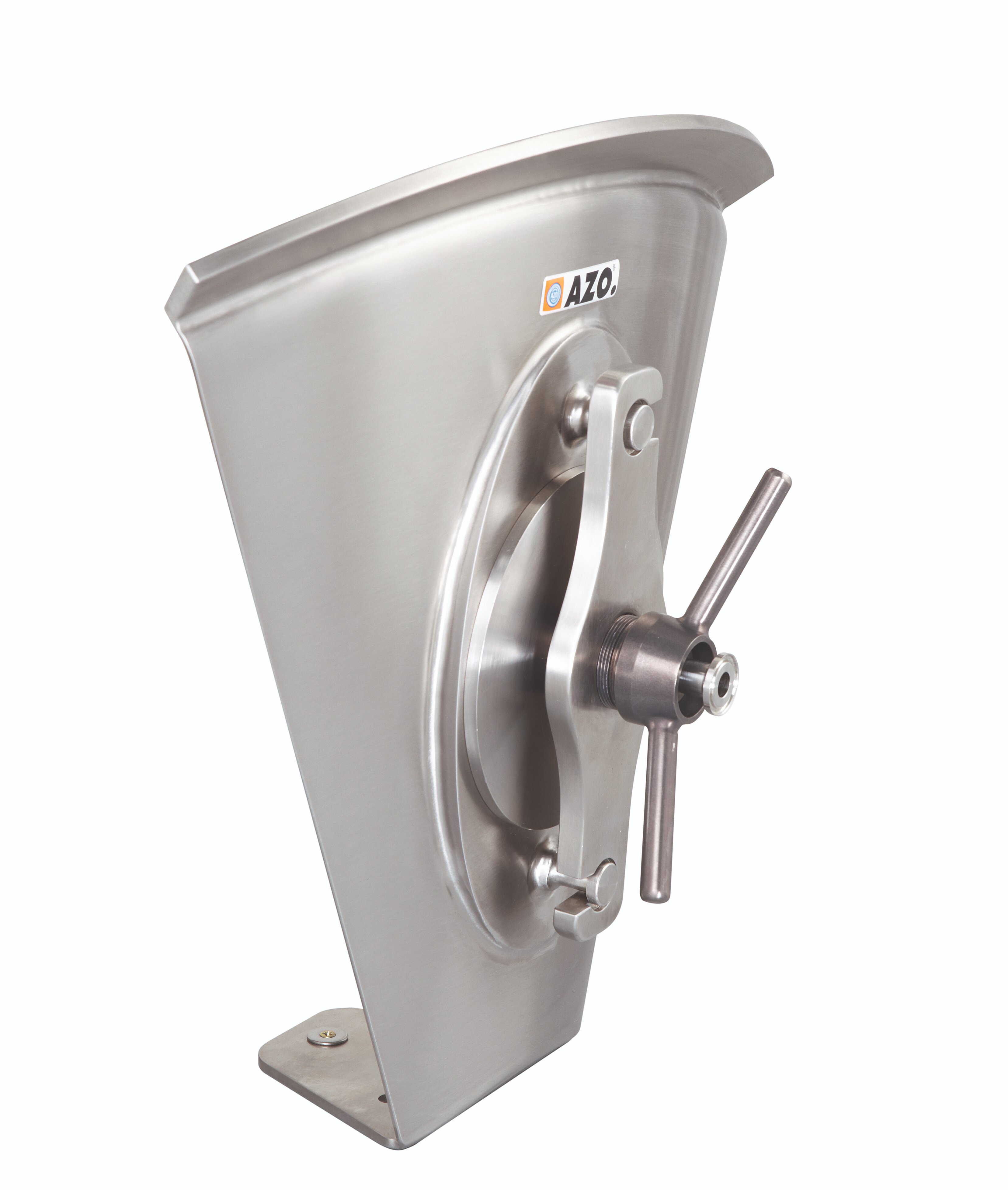
The AZO aeration pad in hygienic design is primarily used to assist discharging of flow-resistant powdery products from containers in hygienically sensitive areas. It is used especially in areas where rapid cleaning, possibly WIP or CIP cleaning, is required.
The nozzle component is sealed to the mounting flange by means of an aseptic seal. The design is based on DIN 11864-2, form A with the relevant modifications, which are necessary for level-surface sealing. With this design, the space required to fit an o-ring is limited by connecting the groove and collar components in such a way that the o-ring moulds itself to the interior of the container and, in doing so, creates a cavity-free seal.
Aeration
Air or gas reaches the radial holes through the axial hole in the nozzle component and flows into the cavity under the pad. The sealing lip on the outer edge of the pad is raised with the increasing pressure and the gas flows into the container. Here the air carries along and fluidises the surrounding product. When the pressure falls the sealing lip of the pad returns to its original position again whereby the pressure begins to rise again as gas then flows through. This process repeats itself as long as the aeration pad is pressurised with gas. The vibration of the pad actively contributes to discharge aid.
Cleaning
If cleaning fluid is fed into the pad instead of air or gas, the dead space-free interior of the aeration unit will be rinsed and any possible traces of product will be flushed out. For drying, dry air simply needs to be passed through the aeration pad. The duration of the rinsing and drying cycle depends on the degree of soiling and the quality of the dry air. Fluid cleaning is not a prerequisite when using this aeration pad but an option to achieve a better cleaning result.
Manual cleaning
For dismantling without any tools the T-screw is released far enough that the clamping brace can be released from both pins of the inlet flange by means of a circular motion. The clamping brace and T-screw can now be detached. The nozzle component can be removed from the inlet flange. The seal, which caps the opening fitting aseptically, stays on the nozzle component, like the pad and can later be removed. All loose components on the aeration unit are suitable for automatic cleaning and sterilisation processes.